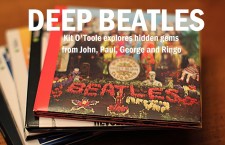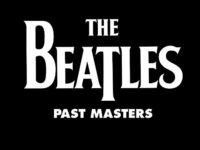John Lennon possessed one of rock ’n’ roll’s best voices, and one track that proves the statement is the Beatles’ take on “Slow Down.” Originally written and recorded by R&B artist Larry Williams, “Slow Down” was a favorite of Lennon’s, and was ultimately issued in the U.K. as part of the 1964 Long Tall Sally EP. In the U.S., “Slow Down” was included on the compilation Something New, and was released as a single with “Matchbox” as the B-side. Despite the Beatles’ raucous makeover and Lennon’s intense lead vocal, “Slow Down” peaked at No. 25 on the Billboard charts.
Today, Williams may not be a household name, but his compositions rank among rock’s most beloved early tracks. Between 1957 and 1959, the singer recorded now-classics such as “Bony Moronie,” “Dizzy Miss Lizzy,” “Short Fat Fannie,” and “Bad Boy.” The Beatles and other British Invasion groups admired Williams for his showmanship and racy sound. Unfortunately, the singer/songwriter led a dangerous life offstage.
In 1960, he was convicted of selling narcotics; after serving time, he tried to resurrect his career but proved unsuccessful. By the mid-’60s, Williams found work as his friend Little Richard’s producer and musical director; however, addiction soon reentered the picture. In 1977, a drug-fueled Williams pointed a gun at Little Richard, accusing him of reneging on a drug deal. (The incident reportedly inspired Richard to give up narcotics and join the ministry.)
Sadly, in 1980 Williams was found dead, killed by a bullet to the head at age 44. The death was initially ruled a suicide, but speculation persists that he was murdered due to his questionable connections. While Williams’ life ended badly, his music lives on thanks to covers by fond fans (including a punk-fueled version from the 1994 Backbeat soundtrack). The Beatles’ covers of “Dizzy Miss Lizzy,” “Bad Boy,” and “Slow Down,” among others, introduced Williams’ music to a larger audience. In addition, the songs contained some of John Lennon’s most blistering rock vocals.
The group recorded “Slow Down” during the Hard Day’s Night sessions, although they had played it many times before as part of their 1960-1962 live sets. Entering Abbey Road Studios on June 1, 1964, they recorded six takes of the track, which featured Lennon on lead vocals and rhythm guitar; Paul McCartney on bass; George Harrison on lead guitar; and Ringo Starr on drums. Take three of the backing track was deemed best, and Lennon subsequently overdubbed his lead vocals, which were double tracked. Deciding the song needed extra oomph, George Martin added a pounding piano part on June 4, then created a mono mix of “Slow Down.”
The Beatles performed “Slow Down” live for the BBC on July 16, 1963 for the show Pop Go the Beatles. They recorded the track at the BBC Paris Theater in London, and it can now be found on the Live at the BBC compilation.
Interestingly, the Beatles’ version of “Slow Down” is not universally acclaimed. Ian MacDonald famously dismissed the group’s song makeover in Revolution in the Head, saying that their version lacks “bottom, drive, and basic cohesion,” calling the guitar solo “embarrassing” and “the sound balance a shambles.”
Indeed, “Slow Down” lacks the more polished sound of “Bad Boy” or “Dizzy Miss Lizzy.” Lennon flubs the lyric “Now you’ve got a boyfriend down the street,” and the guitar solo may not rank among the Beatles’ best – although the ending guitar notes are charming. Williams’ version exudes the 1950s rock ’n’ roll sound, complete with a rollicking sax solo and Jerry Lee Lewis-esque piano. Martin, Lennon, and Harrison try to replicate the original with piano and guitars, albeit in a sloppier style.
Lennon’s lead vocal, however, is the star here. He imitates Williams’ innuendo-filled delivery, particularly the bilabial trill between the second repetition of the lines “You gotta gimme little loving, gimme little loving / If you want our love to last.” In other words, Lennon makes a vibrating sound through his lips, similar to that of a motorboat. However, his gritty voice adds an edge the original lacks; similar to “Bad Boy,” Lennon’s take on the song sounds a bit more dangerous, more rowdy.
Most likely his performance reflects the Hamburg days, when the boys had to “mach schau,” as Hamburg club owner Bruno Koschmider would command them. At the Indra and Kaiserkeller, the Beatles would intensify the showmanship to attract passersby into the establishments; his screaming on “Slow Down” most likely excited audiences in the Beatles’ early days, and John Lennon effectively recreates the environment on record.
While “Slow Down” may not rank among the Beatles’ most well-known covers, it does provide a snapshot of the group’s raw early days. Their energy may have led to less-than-perfect playing, but it effectively argues why Hamburg music fans were drawn to their club shows. In addition, Lennon demonstrates why he is considered one of rock’s finest singers. Finally, “Slow Down” illustrates how R&B played a significant role in the Beatles’ formative years, and ultimately shaped their unique sound.
- How John Lennon Came Roaring Back on the Beatles’ White Album - November 22, 2023
- Five ‘With the Beatles’ Deep Cuts That Illustrate Their Lasting Debt to R&B - November 20, 2023
- Five Must-Hear Deep Cuts from the Beatles’ ‘Past Masters’ - March 7, 2023



